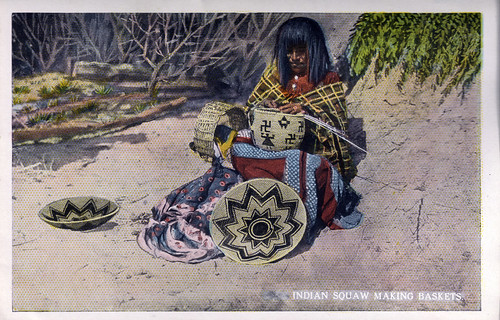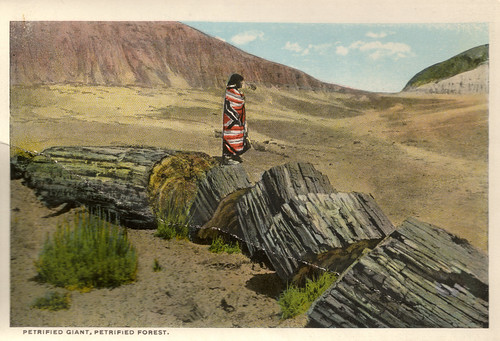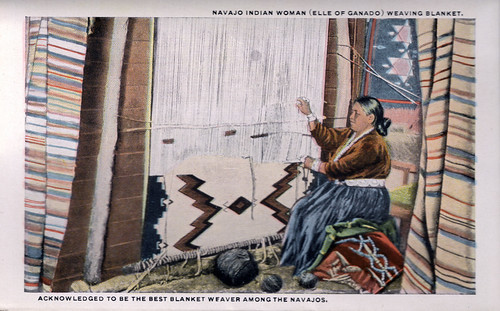
In my second installment on the Curt Teich & Co. postcard book, "Souvenir of the Wonders of Arizona" I want to address a topic that is sometimes troubling for collectors of old things. When we buy old things, we give an object a new chapter in its history - as a collectible or artifact - but that object remains an expression of its creator and has inscribed upon it that creator's values and beliefs, not the current owner's. They express values that were socially acceptable (or, if not acceptable, widespread) at the time they were created.Oftentimes, these objects present racism, sexism, or environmental exploitation. For example, the postcard above displays the caption "Typical Mexican Peon Home and Family." Obviously, using the term "peon" to describe a rural farming family is inappropriate and offensive. The fact that the family displayed is Mexican, makes race/ethnicity/nationality an issue as well. It seems unlikely that they would be featured as a some sort of anthropological tourist attraction if they were American, and they certainly wouldn't have been referred to as "peons." Are rural Mexican farmers really a "Wonder of Arizona?"

"Wonders of Arizona" also presents Native Americans as tourist attractions and, in my opinion, reduces their humanity by contextualizing them among natural wonders (Grand Canyon and Thumb Butte) and architectural wonders (San Xavier and the State Capital). One might argue that Native American culture and history is an important aspect of Arizona that visitors benefit from exploring, but it's not THAT the Native Americans are displayed here that should make it offensive to our contemporary sentiments, but HOW. It's not the richness of their heritage or art that's foregrounded; rather, what visitors to Arizona can see is the castrated and contained natives, such as this "Indian Squaw" weaving.

"Wonders of Arizona" celebrates Native American provincialism. The message is "come see something harmless; strange people who aren't us and aren't modern." They're colored very darkly, so darkly that their features become obscured. The irony above is that this Apache family is seated next to the newly constructed Roosevelt Lake. Their old way is set against the backdrop of a modern marvel.

As with the Apache by Roosevelt Lake, this Native American woman appears in the postcard of petrified forest to add an element of exoticism to the scene. She, like the petrified tree she stands by, are relics of past times. Both are on display to the visitor of Arizona.

Out of all the postcards, only this depiction of "Elle of Ganado" (there's a real authentic Navajo name for you) presents an individual with her humanity intact. Her features are visible, she sits on something other than the ground, and, most importantly, she is named. Her context remains troublesome, though admiration is clearly expressed for her craft.

So I suppose the concluding question is, "If your collectible evokes such strong negative feelings, why collect it? Why not sell it or destroy it?" Here's my answer and I doubt it will be entirely satisfactory. The object and the message inscribed in it can be recontextualized. The collected antique or relic necessarily changes from it's original purpose. I don't own the "Wonders of Arizona" postcard book for the same reason it Carl Teich & Co. created it. I didn't buy it and send it, like L.T. Brookman did to Myrtle Harnett, as a representation of the wonders of Arizona. As the owner of this postcard book, I can redefine the messages contained within. I can do something as drastic as post this discussion, or I could do something as subtle as inform my future daughter or son (if s/he ever comes along) that "This is one hundred years old. We don't call Native American women squaws anymore. It's disrespectful." The power lies in the collector, not the collectible. In fact, I think it's responsible when modern collectors save troublesome objects precisely because it keeps the past in the present and allows for discussion of changing values and past mistakes.
For a perhaps more troublesome and moving discussion on this topic, visit Without Sanctuary, a website run my James Allen, a collector of lynching postcards.

No comments:
Post a Comment